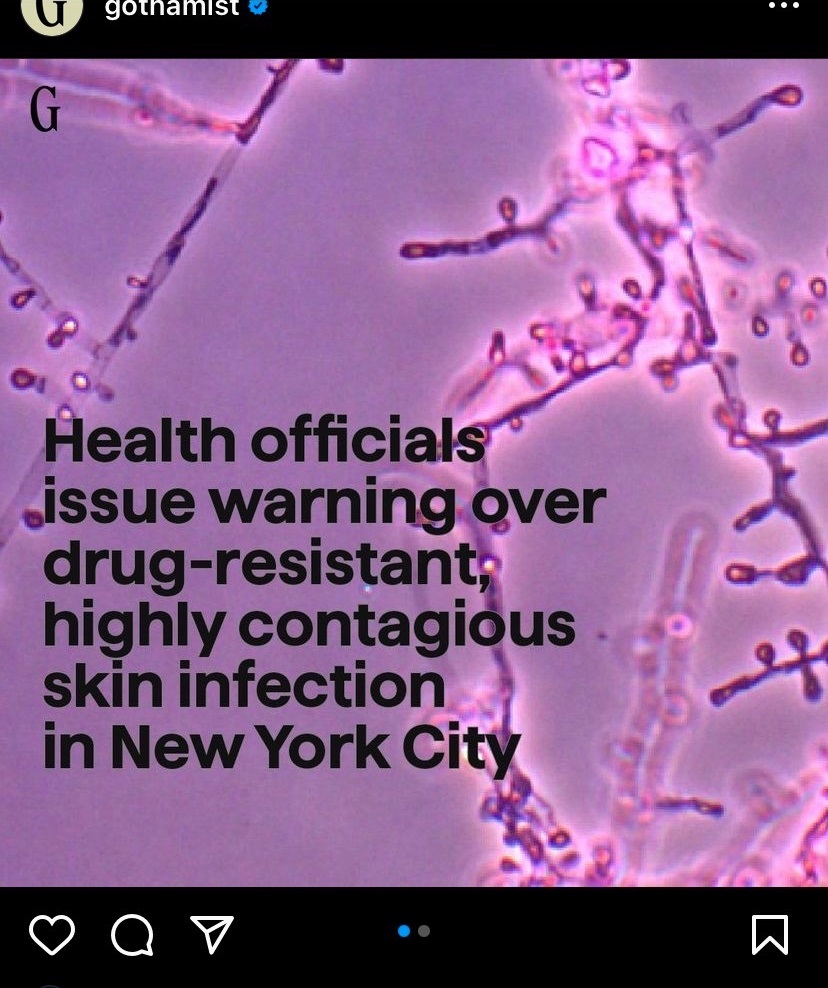
A medication-resistant ringworm variant has reached the United States, where New Yorkers are freaking out as two individuals have sought medical help to treat this Trichophyton indotineae infection. Meanwhile, in India, there has been a surge in the number of infections, reaching epidemic levels, according to the CDC.
Before people start to panic, this variant is not a life-threatening condition and does not transmit through airborne particles. Ringworm is not caused by a parasite, but a fungal infection – more precisely a dermatophyte mold.
While approximately 40 varieties of fungi can lead to ringworm, the most common culprit for this one is a fungus known as Trichophyton mentagrophytes. Assuming that all cases of ringworm are the result of T. mentagrophytes, it can prove problematic for both patients and their physicians, as various fungi require different treatment approaches.
Those with a weak immune system and people using public locker rooms and showers are more vulnerable to the infection.
Bioresonance therapy can help boost the immune system and detox the internal organs. This complementary approach promotes balance within the body. It detects and analyzes electromagnetic oscillations emitted by the body.
Imbalances in these oscillations might indicate an underlying health problem, including infections. With the help of specialist devices, bio-resonance therapists can support the body’s natural healing mechanisms and enhance the immune system’s functioning. Thus, making people less susceptible to infections.
This latest form has genetic mutations that make antifungal drugs incapable of treating it. The species owed to the Trichophyton indotineae is estimated to come from somewhere in Australia back in 2008, according to a summary by Extreme Tech.
By 2017, T. indotineae reached Indian soil, replacing prevalent species of ringworm and swiftly spreading across the nation. This spread was most likely fueled by the rampant improper usage of topical products containing steroids or antifungal agents.
Eventually, the ringworm reached Asia, Europe, and Canada. Based on the latest reports, it is now affecting American patients.
A dermatologist in New York City reported to public health authorities on February 28, 2023, about two patients with severe tinea that did not respond to oral terbinafine treatment. This raised concerns about the possibility of T. indotineae infection. Skin samples from both patients, initially recognized as Trichophyton mentagrophytes, were sent to the Wadsworth Center, New York State Department of Health, for additional testing. The notes were published in a recent report by the CDC.
In American patients, conventional laboratory tests cannot differentiate T. indotineae from other species. Therefore, both cases were attributed to T. mentagrophytes. But, it was not until March 2023, when significant suspicion arose, that isolates from both patients underwent genetic sequencing. This confirmed the presence of T. indotineae.
These drug-resistant strains have the potential to spread extensively across the body. This can lead to persistent or recurrent itching.
In the case of the young 28-year-old pregnant woman (one of the reported patients), the rash affected her neck, stomach, pubic area, and bottom. For the older 47-year-old woman, uncomfortable plaques developed on her bottom and thighs. These rashes can cause significant discomfort, alienation from society, and reduced quality of life.
While experts are working on the exact cause and treatment options, there are a couple of options that can help avoid the infection. Maintaining proper hygiene practices, such as regular bathing, daily changes of socks and underwear, and refraining from wearing tight shoes that induce foot perspiration, are essential.
Additionally, it is advised to shower after engaging in contact sports (i.e. rugby, wrestling, boxing, etc) and to wash hands thoroughly after interacting with pets. These simple measures contribute to promoting cleanliness and reducing the risk of infections.



Leave a Reply